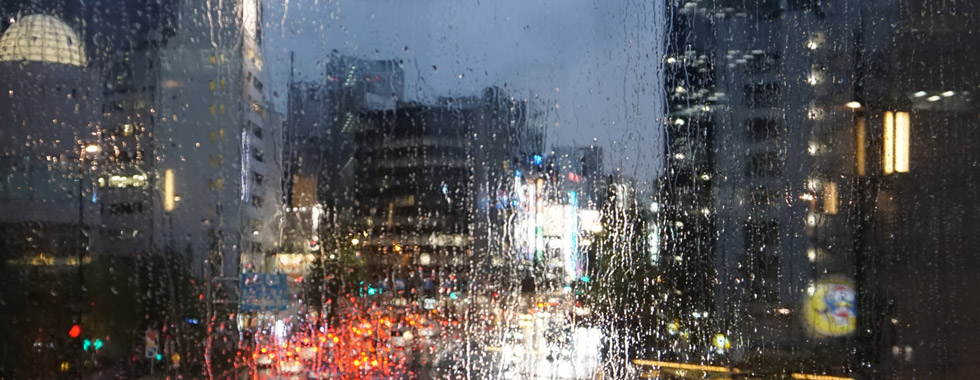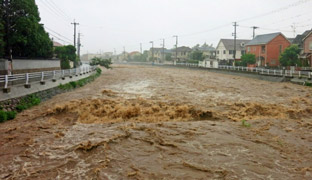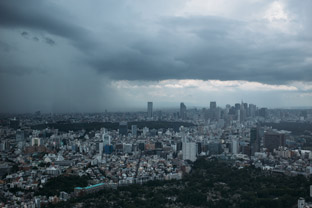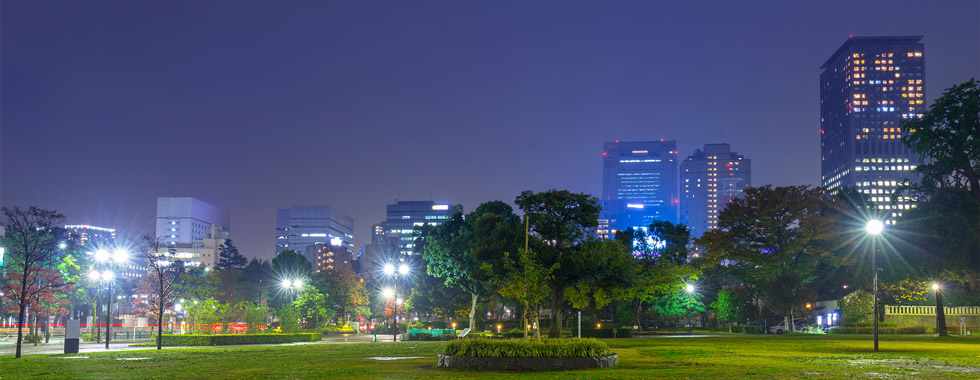Typhoons and Heavy Rain

Typhoons

The typhoon season in Japan is from July through October, so it is important to be aware of the hazards of strong winds and heavy rains. During heavy rainfall, precipitation can exceed 100mm per hour, overwhelming the drainage capacity of flood control centers. Below are some guidelines to minimize potential damage.
- Close and lock windows properly.
- Move anything that is breakable or that can be blown away indoors, including plants, pots and patio furniture.
- If you have a basement room accessible from outside, block the door and do not go inside.
- Check the TV or radio for updated weather reports and road conditions.
- Find out beforehand where English news is broadcast.
- Blackouts and water outages may occur.
- Beware of flying debris when outdoors.
- Stay away from rivers and waterfronts.
- When there is heavy rain, avoid using underground facilities.
“Guerilla” Rain

The term“gerira gouu”(ゲリラ豪雨) refers to the phenomenon of highly localised heavy rain. Though it is not an official term, the expression, which means“guerilla downpour”is used due to the sudden and unpredictable nature of the phenomenon. The typical season for this kind of rainfall is summer, from July to the end of September, though it can occur outside of these months.
Though it’s hard to tell when one of these downpours will happen, there are some meteorological signs to be on the lookout for:
- The approach of thick black clouds, and a darkening of the sky in the vicinity
- Thunder and lightning
- A cool wind blowing
- Large rain droplets or hail
Here are some measures you can take to prevent getting caught out by guerilla rain:
- During the season, carry an umbrella even if it doesn’t look like it will rain
- As these downpours typically don’t last long, take shelter until the rain stops rather than rushing to your destination
- Flooding can occur, so when driving, be wary of downward slopes in the road
Heavy rainfall warning
Beginning in 2019, heavy rainfall will be categorized on a five-level scale for disaster prevention purposes. These levels will be reported through the news and other media as (大雨警戒レベル) in Japanese, and refer to the measures recommended or taken by relevant authorities for the protection of communities.
- Warning Level 5: All measures necessary to protect life are advised.
- Warning Level 4: Evacuation is recommended or directed.
- Warning Level 3: Evacuation preparations. Evacuation of the elderly commences.
- Warning Level 2: Checking of evacuation spots and routes.
- Warning Level 1: Increase in disaster readiness.
To learn more about the Emergency Warning and current weather warnings/advisories, please refer to Japan Meteorological Agency website.
- Useful Links
- Emergency Warning System
- Weather Warnings/Advisories
